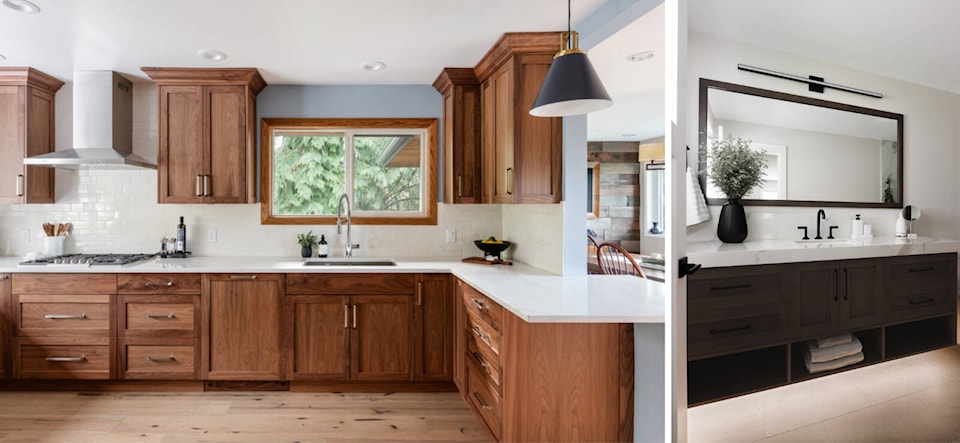While many might start their renovation lighting plan with potlight positioning and wall sconces, for Javiera Lara-Faure, it all begins with natural light.
Considering things like window size and placement, for example, establishes a foundation upon which layers of architectural and decorative lighting are built, alongside features like mirrors and reflective surfaces, explains the MAC Renovations Interior Designer.
“In a perfectly lit room, all these things work together,” she says. Working in tandem with the floorplan, flooring material, paint colours and other design elements, “I think of lighting as jewellery or as a sculptural element in your home.”
With the natural light mapped out, the next step is the architectural lighting – potlights, closet or pantry lights, and bathroom sconces for example. You might layer into this things like stairway lighting and under-cabinet lights in the kitchen and bathroom that serve as nightlights – a welcome safety tool for anyone getting up in the night for water or to care for children.
Next comes the decorative lighting – think chandeliers, table and floor lamps, and lighting for display shelves or cabinets. These are features that can add a sense of style and warmth to a space, and draw attention to unique elements.
With every lighting plan, “it’s about striking the balance between function and aesthetics,” Lara-Faure says.
Special considerations
Understanding the nuances of light itself also helps create the space you want. Lara-Faure often hears about a space that’s too dark, without much natural light, but often it’s just a matter of the wrong light in the wrong place.
“If you put in the right lighting, with the right colour bulb, that space will be completely transformed.”
- A key choice will be the bulb, much longer-lasting and more energy-efficient than in years past. If you want a brighter, whiter light – in the kitchen, perhaps – look for a bulb with higher kelvins. Bulbs with lower kelvins will produce a warmer light more akin to sunset or candlelight – something more appropriate for a dining or living room.
- Regardless of the brightness or location, do consider the option of a dimmer. “I think every light on the planet should be on a dimmer,” Lara-Faure says with a laugh. But the point is well-taken: A room’s lighting and its tasks vary over the course of the day and the brightness of the lighting will similarly change.
- Placement is another consideration. Place decorative lighting too high, and you won’t be able to enjoy it as well. Conversely, if a stunning view is the show-stopper of the space, avoid having a large, heavy fixture blocking the view. Evaluate placement by having a friend hold the fixture in place, while you assess the position.
- Do consider scale. If a fixture is too big, it can overwhelm a smaller space; too small it can get lost, Lara-Faure says.
“Don’t be afraid of lighting – it’s your best friend. Consider it part of your final space, along with flooring, paint colours and other selections.”
To learn how a renovation can light up your life, visit macreno.com or call
READ MORE:
How long will that renovation take?
The ‘secret sauce’ to your dream kitchen has nothing to do with food
